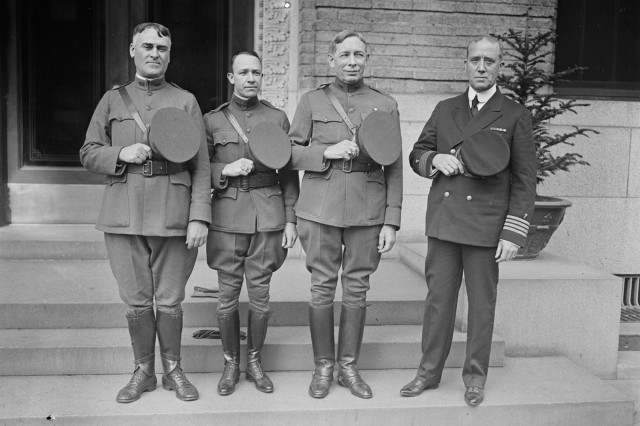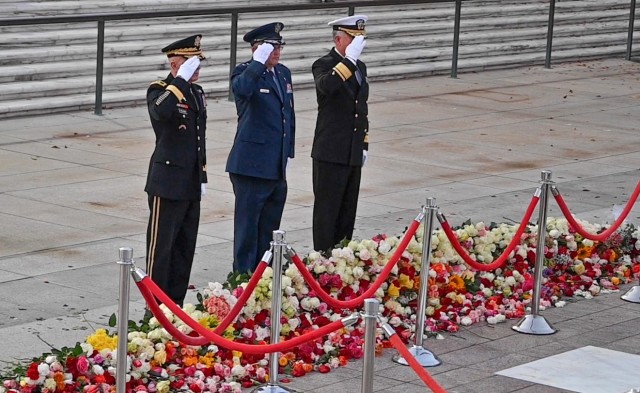ARLINGTON, Va. — One hundred years ago, on Armistice Day, Nov. 11, 1921, American civilian and military leaders gathered at Arlington National Cemetery to dedicate the Tomb of the Unknown Soldier. The United States had suffered more than 100,000 casualties during World War 1, and the unknown soldier interred in the tomb was chosen to represent the service and sacrifice of all those Americans whose remains could not be identified. France and Great Britain had each repatriated and buried one unknown World War 1 soldier one year earlier.
Inscribed on the tomb are these words, “Here rests in honored glory an American soldier known but to God.” With unknowns from later wars added to the tomb in 1958 and 1984, the Tomb of the Unknown Soldier has served since its dedication as an enduring, iconic place of public mourning and reflection on military service. The tomb has a special Honor Guard, known as “Sentinels,” who are soldiers of the 3rd U.S. Infantry (The Old Guard).


During the 1921 dedication ceremony, the Army’s first Chief of Chaplains, Colonel John T. Axton, provided the invocation, before President Warren G. Harding delivered the keynote address. The Navy’s first Chief of Chaplains, Captain John B. Frazier, provided words of comfort from scripture.
At the closing of this year’s Centennial Commemoration Public Flower Ceremony, a two-day event on Nov. 9 and 10, Chaplain Axton’s prayer was recited by the current Chiefs of Chaplains of today's three U.S. military services, Army Major General Thomas L. Solhjem, Air Force Major General Randall E. Kitchens, and Navy Rear Admiral Brent W. Scott.
Resources:






Social Sharing